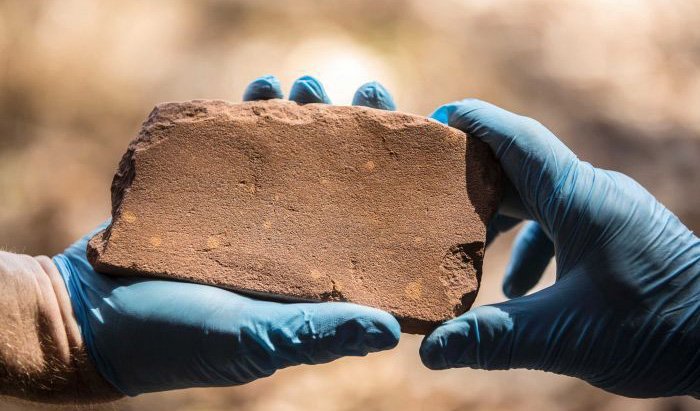New evidence: human presence in northern Australia as early as 65,000 years ago

NEW ANALYSIS of a trove of Northern Territory artefacts suggests that the first peoples have been present in Australia for up to 65,000 years.
This evidence shatters previous estimates that commonly date the continent’s first people to a maximum of 47,000 to 60,000 years ago.
Archaeologists and dating specialists from The University of Queensland, led by Dr Chris Clarkson, unearthed over 10,000 artefacts from the lowest layer of the Madjedbebe rock shelter site, located on the western edge of the Arnhem Land plateau in the Jabiluka mineral lease, near world heritage-listed Kakadu National Park.
Their findings were published in Nature this week, shedding new light on the characteristics of the migration of Homosapiens to Sahul, the Pleistocene landmass that primarily joined Australia and New Guinea.
“The settlement of Madjedbebe around [65,000 years ago] … sets a new minimum age for the human colonization of Australia and the dispersal of modern humans out of Africa and across south Asia,” the study said.
The new dates indicate that the earliest-known Aboriginal people would have lived concurrently with Australia’s megafauna for 20, 000 years before the continent-wide extinctions of giant birds, marsupials, and reptiles. It also means modern humans inhabited Australia for at least 15, 000 years while more archaic hominins still lived in southeast Asia and Australasia.
Clarkson and his team had unprecedented access to the Madjedbebe site due to a formal partnership between the university and the Gundjeihmi Aboriginal Corporation, which allowed the traditional owners of the land, the Mirarr clan, significant operational control of the research.

Mirarr traditional owner May Nango (second the right). (Image Credit: Glenn Campbell)
The site was first excavated in 1989, and artefacts were determined to be 60,000 to 50,000 years old, distinguishing Madjedbebe as the oldest known site of human occupation in Australia.
During return digs in 2012 and 2015, the Queensland team excavated deeper, closer to the “zone of the initial occupation,” and reanalysed the whole site using more advanced radiocarbon and optically stimulated luminescence (OSL) dating methods.
The more recent assemblage proved larger and more diverse, which further contributed to the firmer conclusions about stratigraphic integrity and the age of the site.
Significant materials found in the rock shelter include seed-grinding tools that are believed to be the oldest in Australia, indicating early collection and processing of plant foods. The site also contained evidence of the world’s first example of reflective pigment, created by adding crushed mica to ochre, a ground Earth pigment that archaeologists also found in the form of “ochre crayons.”
“This study confirms the sophistication of the Australian Aboriginal toolkit and underscores the universal importance of the Jabiluka area. These findings reinforce the need for the highest level of conservation and protection for this site,” said Justin O’Brien, CEO of the Gundjeihmi Aboriginal Corporation, in a news release.
Additionally, archaeologists identified ground-edge stone axe technology that is believed to be the oldest in the world.
Dr Anne Ford, a lithic technology expert from The University of Otago, told Australian Geographic that though the limited depth of material available for radiocarbon dating may cause questions surrounding the exact age of the site to remain, the number and consistency of OSL dates for the earliest phase are compelling.
“The evidence for the first innovation of hafted ground stone axes globally occurring in Sahul has been mounting steadily in recent years,” she said. “These new artefacts from Madjedbebe would appear to cement this technology as a true Sahul invention.”
The study was funded by an Australian Research Council Discovery Project grant.

